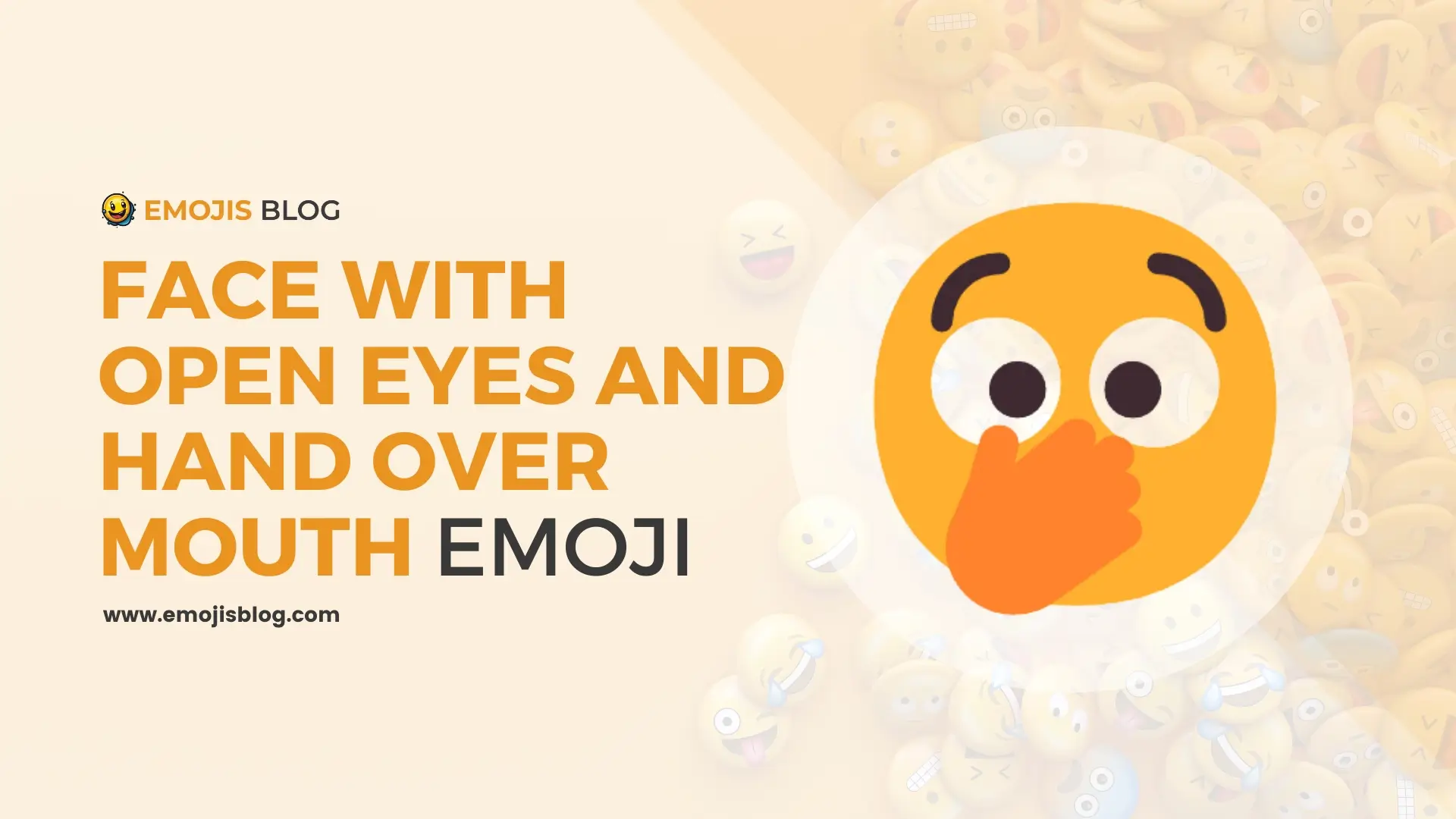Face With Open Eyes And Hand Over Mouth Emoji Meaning 🫢
🫢
Face With Open Eyes And Hand Over Mouth Emoji Meaning 🫢
The 🫢 emoji, depicting a face with open eyes and a hand covering the mouth, conveys a range of emotions including shock, surprise, disbelief, and embarrassment. This emoji is commonly used to express a speechless reaction to unexpected events or to subtly indicate that one is trying to suppress laughter or hide their true feelings in a situation. Its versatile expression makes it suitable for scenarios where words are insufficient to capture the intensity or complexity of an emotional response.
Technical Information
| Attribute | Details |
|---|---|
| Emoji | 🫢 |
| Description | Face with open eyes and hand over mouth |
| Unicode Version | Unicode 14.0 |
| Category | Smileys & Emotion |
| Subcategory | Face-hand |
| Codepoint | U+1FAE2 |
| Shortcode | :face_with_hand_over_mouth: (in some platforms) |
| Introduced | 2021 |
Understanding the 🫢 Emoji: Face with Open Eyes and Hand Over Mouth
The 🫢 emoji, which depicts a face with open eyes and a hand covering the mouth, is a versatile symbol used in digital communication to convey a range of emotions and reactions. This emoji is particularly effective in expressing shock, surprise, disbelief, or even trying to suppress laughter or embarrassment. In this article, we will explore the different uses and interpretations of the 🫢 emoji to better understand how it enhances online interactions.
Origins and Design
The 🫢 emoji is part of the Unicode Standard, which means it is universally recognized across different platforms and devices. It was introduced to add more nuance to the way emotions are conveyed in digital form, bridging the gap where words might fall short. The design typically features wide-open eyes and a hand covering the mouth, which is a gesture commonly associated with reactions of astonishment or concern.
Common Uses and Contexts
Expressing Surprise and Astonishment
One of the primary uses of the 🫢 emoji is to express surprise or astonishment. This could be in response to unexpected news, a surprising fact, or an unforeseen event. The wide-open eyes symbolize the person’s heightened alertness or shock, while the hand over the mouth may indicate a speechless reaction or an attempt to stifle a verbal response.
Concealing Emotions
Another common interpretation of the 🫢 emoji is the act of concealing one’s emotions. This can be particularly relevant in scenarios where a person feels it’s inappropriate to show how they truly feel. For instance, if someone finds something amusing in a serious situation, they might use this emoji to indicate their struggle to maintain composure.
Signifying Embarrassment
The 🫢 emoji can also be used to signify embarrassment. This might occur in situations where someone has made a mistake or experienced a mild social faux pas. The gesture of covering the mouth can imply the person’s desire to hide their embarrassed smile or nervous laughter.
Cultural Variations in Interpretation
The interpretation of emojis can vary significantly across different cultures. In some contexts, the 🫢 emoji might be seen as a gesture of politeness or modesty, while in others, it could be perceived as a sign of discomfort or unease. Understanding these cultural nuances is crucial for using this emoji effectively in international communication.
Conclusion
The 🫢 emoji, with its depiction of a face with open eyes and a hand over the mouth, is a dynamic and expressive tool in the arsenal of digital communication. Whether used to express shock, suppress laughter, or convey embarrassment, this emoji adds depth and emotion to our online interactions. As with any digital expression, the key to its effective use lies in understanding the context and cultural cues of the conversation.

